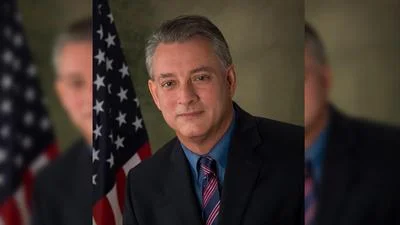The Russia-backed Wagner Group forces placed landmines and boobytraps while withdrawing from Tripoli in 2020, according to public reporting from U.S. Africa Command, nongovernmental organizations, and independent media outlets. More than 300 people were reportedly killed or wounded in Libya by mines and other explosive ordnance between May 2020 and March 2022, including many civilians in areas formerly occupied by Wagner forces.
The United States is working to save lives and build peace by funding the removal of landmines and boobytraps likely placed by Wagner throughout Libya that continue to threaten the safety and livelihoods of civilians. The United States has also sanctioned Wagner Group and its leadership.
A U.S.-funded demining team deactivated at least 34 landmines, including Russian-origin POM-2 and MON-50 anti-personnel landmines near Tripoli between May and July of 2020. Credible independent media reporting asserts that Wagner planted both POM-2 and MON-50 anti-personnel landmines in and around Tripoli, including in residential neighborhoods, posing a danger to displaced civilians returning to their homes.
A Russian-origin MON-50 anti-personnel landmine discovered near Tripoli. (Photo courtesy of the U.S. Department of State)
There is already significant unexploded ordnance (UXO) in Libya from WWII as well as landmines and IEDs from battles with ISIS that continue to threaten the lives of civilians. The POM-2 and MON-50, as well as other Russian origin landmines previously not seen in Libya, add an additional threat to civilians.
Since 2011, the United States has invested more than $53 million in conventional weapons destruction activities in Libya that have safely cleared landmines, IEDs, UXO, and other explosive hazards; facilitated coordination in the demining sector; and destroyed advanced conventional weapons including Man Portable Air Defense Systems. Today, the United States is working closely with allies, international organizations, and demining organizations to reduce the threats posed to civilians by explosive hazards.
U.S. funding currently supports three demining organizations across Libya that have cleared more than 60,000 explosive hazards since 2011. Additionally, the U.S. government has delivered explosive ordnance risk education to over 10,000 Libyan civilians in at risk communities to save lives and prevent injuries by warning of explosive hazard dangers and by spreading the word on how to contact authorities who can safely clear the explosive hazards.
The United States opposes all military escalation and foreign military interventions, including through foreign fighters and proxy forces, which deepen and prolong the conflict in Libya. U.S. conventional weapons destruction investments support the implementation of the October 23, 2020, Libyan nationwide permanent ceasefire agreement, including the withdrawal of foreign forces, fighters, and mercenaries.
U.S. assistance is also strengthening the capacity of Libyan state institutions to effectively manage conventional weapons and ammunition, to minimize the risk of illicit proliferation. In support of Libya’s interim Government of National Unity, U.S. assistance is strengthening human security, generating stability and economic development, facilitating the delivery of humanitarian assistance, and enabling the return of displaced communities. U.S. conventional weapons destruction also helps to promote a peaceful political transition and to strengthen the foundations of a more unified Libyan state by allowing hundreds of millions of dollars in additional U.S. development and humanitarian assistance to be used to benefit the Libyan people.
The United States remains the world’s largest international donor to Conventional Weapons Destruction, providing more than $4.2 billion to support humanitarian mine action, physical security, and stockpile management and associated activities in over 100 countries since 1993. For more information on how the State Department is strengthening human security, facilitating economic development, and fostering stability through demining, risk education, and other conventional weapons destruction activities, check out our annual report, To Walk the Earth in Safety, and follow us on Twitter @StateDeptPM.
About the Author: William Gifford is a Resource Management Analyst in the Bureau of Political-Military Affairs, Office of Weapons Removal and Abatement at the U.S. Department of State.
Original source can be found here.








